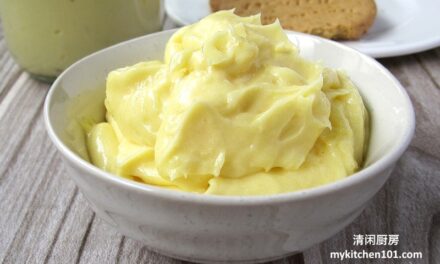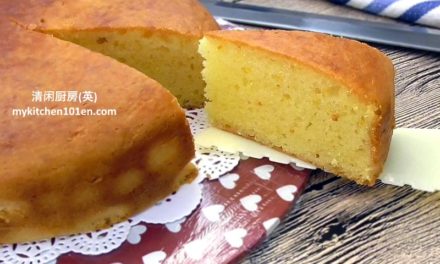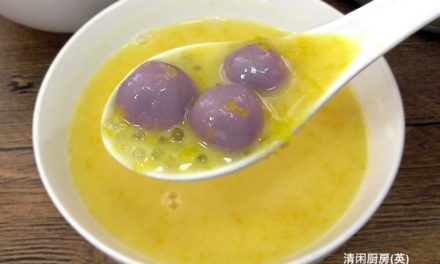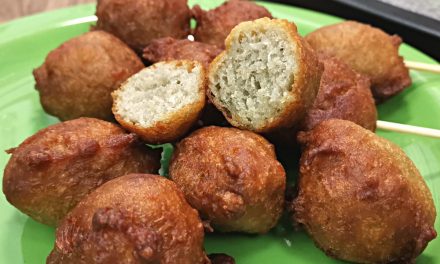What is Cendol?
Among the many unique desserts that the Southeast Asia region has to offer, cendol stands out as a popular and refreshing treat enjoyed by locals and travelers alike. These green rice flour jellies often served in chilled coconut milk and palm sugar concoction, have become a symbol of Southeast Asian desserts. In this blog post, we will take a closer look at the origins of cendol and guide you through making these delightful green jellies at home.
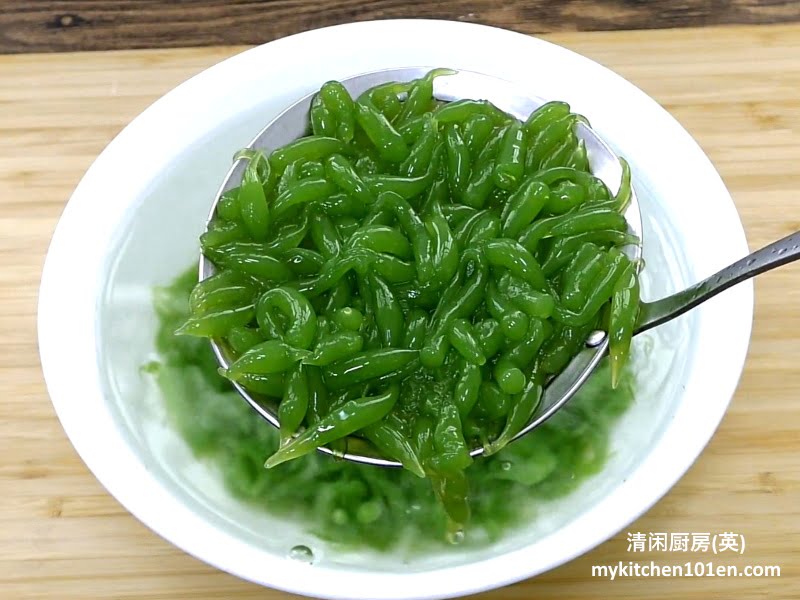
Cendol: A Brief History
Cendol is a traditional dessert believed to have originated from Indonesia, but it has since become a popular treat across Malaysia, Singapore, Brunei, Cambodia, Vietnam, and Thailand. The name “cendol” is derived from the Javanese word “jendol,” which translates to “bulge” or “swollen,” referring to the plump, worm-like appearance of the green rice flour jellies.
Cendol is typically served in a bowl with crushed ice, coconut milk, and palm sugar syrup. Depending on regional variations, additional ingredients such as red beans, glutinous rice, jackfruit, or sweet corn may also be included.
Making Cendol Jellies: A Step-by-Step Guide
Creating the perfect cendol jellies at home might seem intimidating at first, but with our detailed guide, you’ll be able to craft these delightful treats with ease.
Making your own cendol jellies is quite easy, what you need are just a few simple ingredients. For cendol jellies made with fresh pandan juice, a few drops of lye water are needed to ensure your jellies have nice natural pandan green colour. Without these few drops of alkaline, the colour will become yellowish-green.
CHINESE VERSION: 如何制作煎蕊Cendol条
[ads1]
How to Make Cendol Jellies | MyKitchen101en
Yields: 250 g (10 servings)
Ingredients:
- 260 g pandan juice*
- ⅛ tsp fine salt
- 7 drops lye/alkaline water
- 22 g green bean/mung bean starch**
- 15 g cornstarch
(**Green bean/mung bean starch: It is usually labelled as flour, sometimes as “green pea flour”. You may replace it with Hoen Kwee flour which is usually available at supermarket if you can’t find the mung bean starch.)
Instructions:
1 *Pandan juice: Blend 14 g of pandan leaves with 265 g of water, extract 260 g of pandan juice.
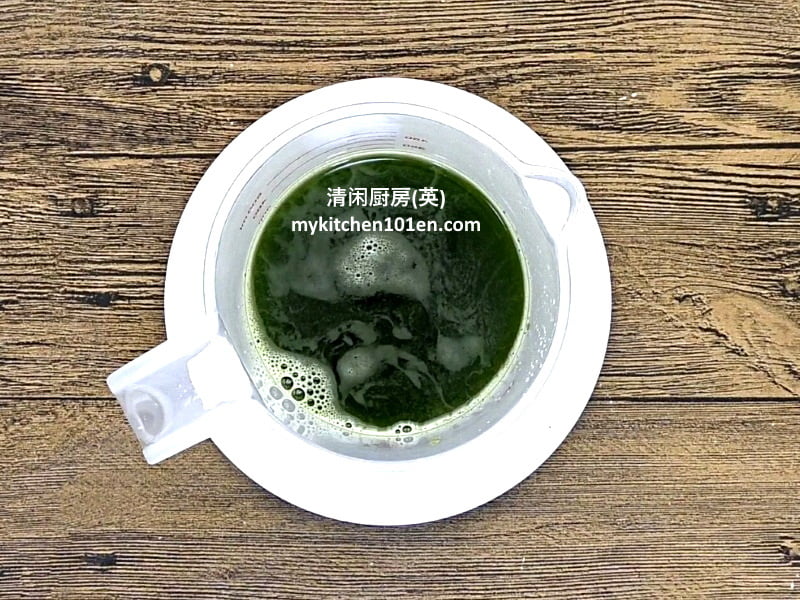
[ads1]
2 Combine salt, lye water and pandan juice, add in green bean starch and cornstarch, mix well, then sieve into a sauce pot.
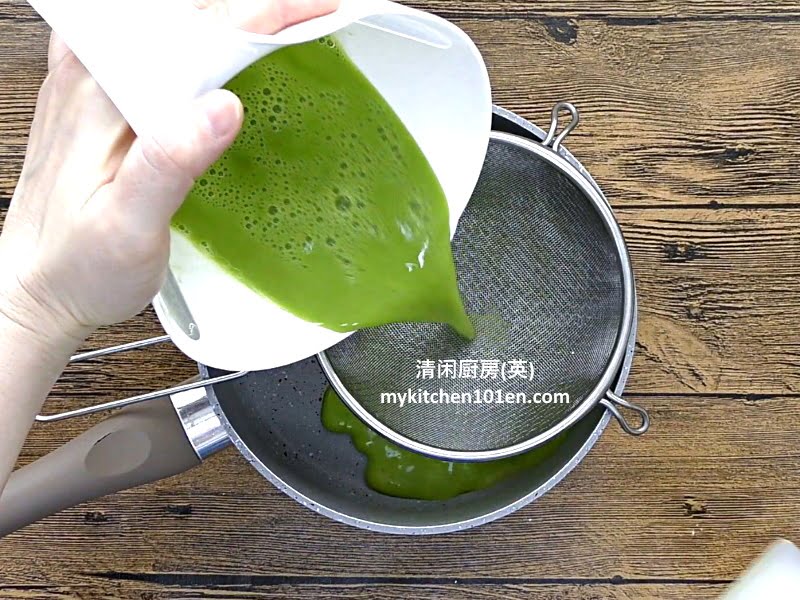
3 Get ready a large bowl of icy cold water.
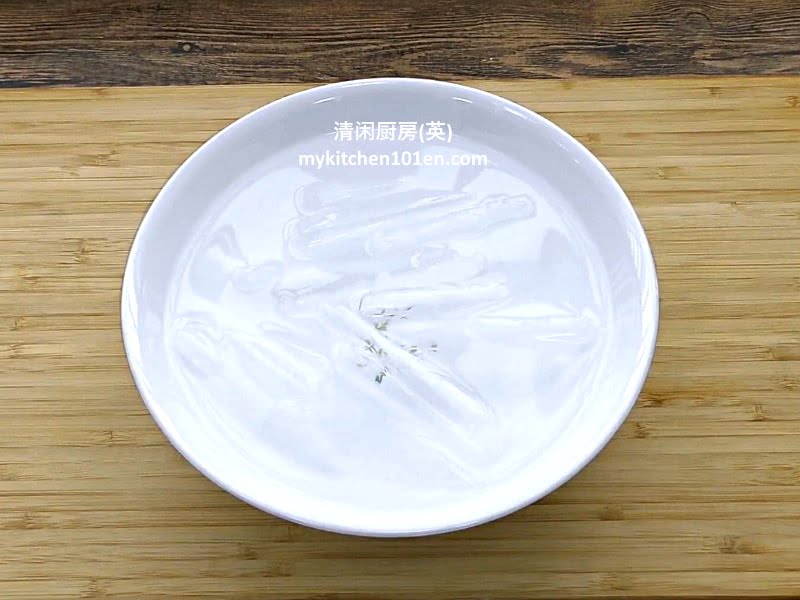
[ads1]
4 Cook over medium heat until fully translucent.
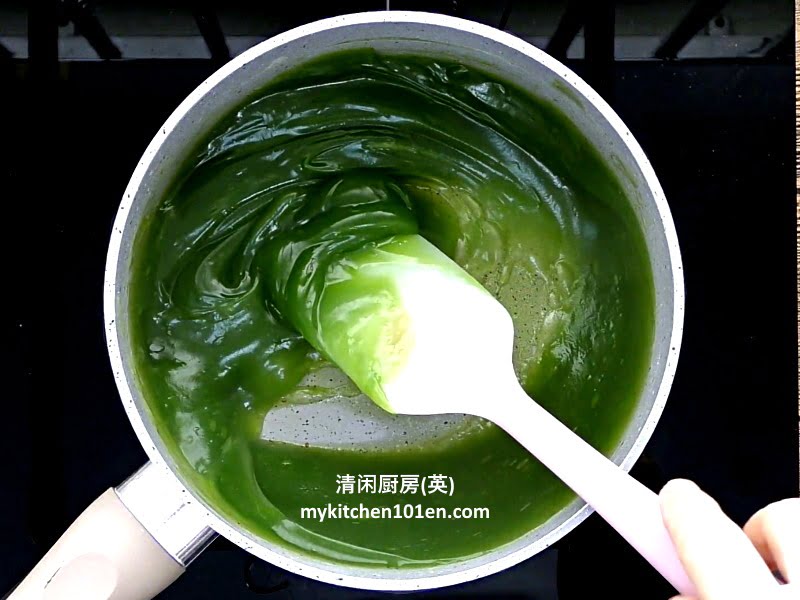
5 Transfer cooked mixture to large stainless steel strainer with holes. Press down with silicone spatula into cold water while still hot.
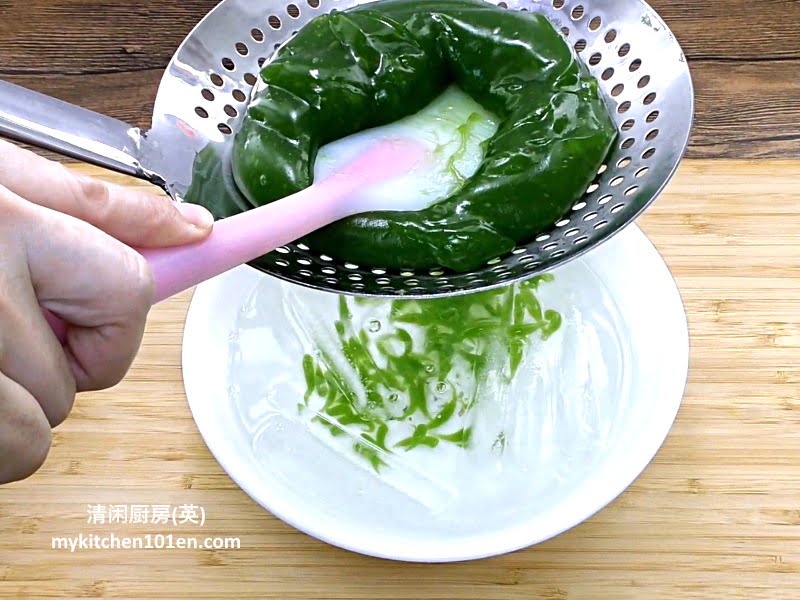
6 Cendol jellies are ready to be served.
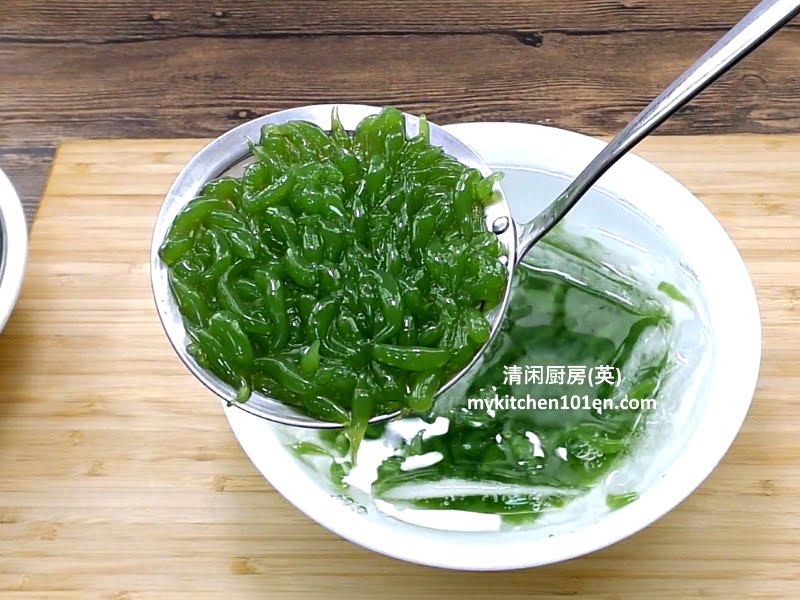
7 For storage: Put the jellies together with water in a container and keep refrigerated for later use.
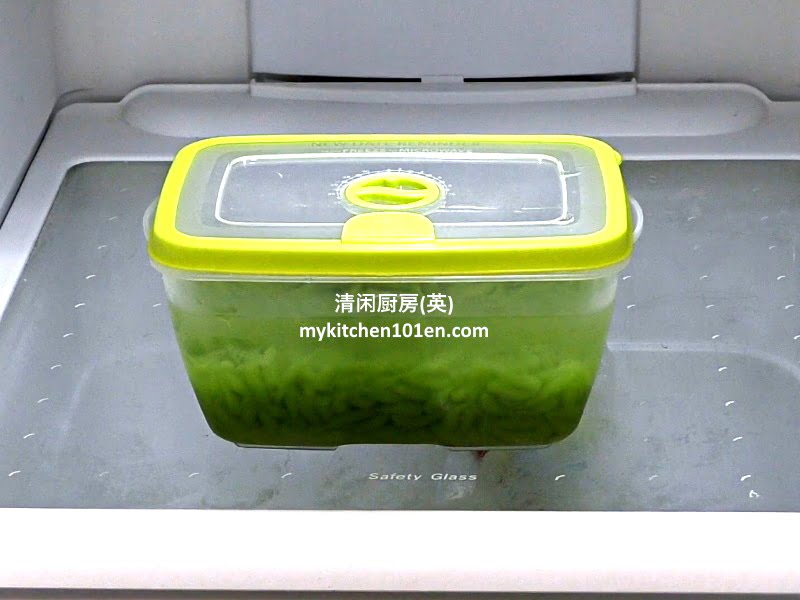
8 To serve chilled jellies: Drain off the soaking water, and rinse with hot water until softened. Drain off hot water, then soak again in icy cold water. Drain off the water before serving.
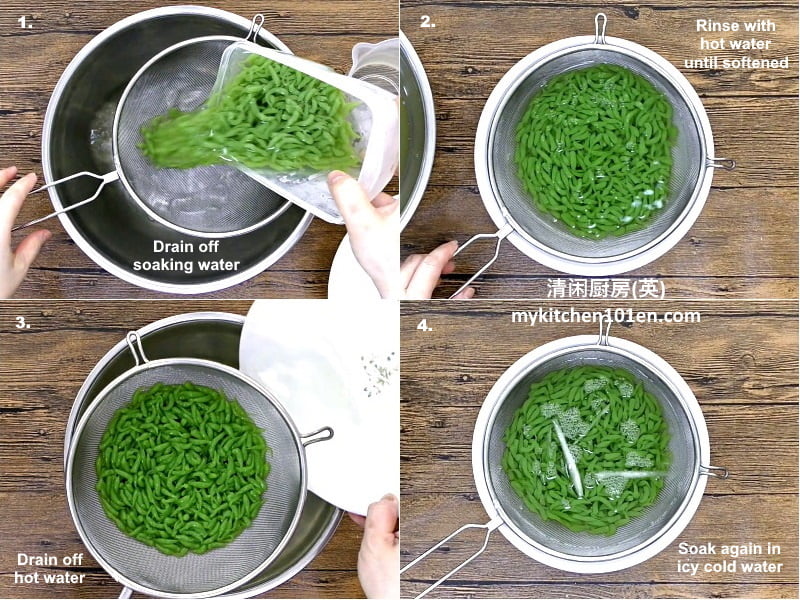
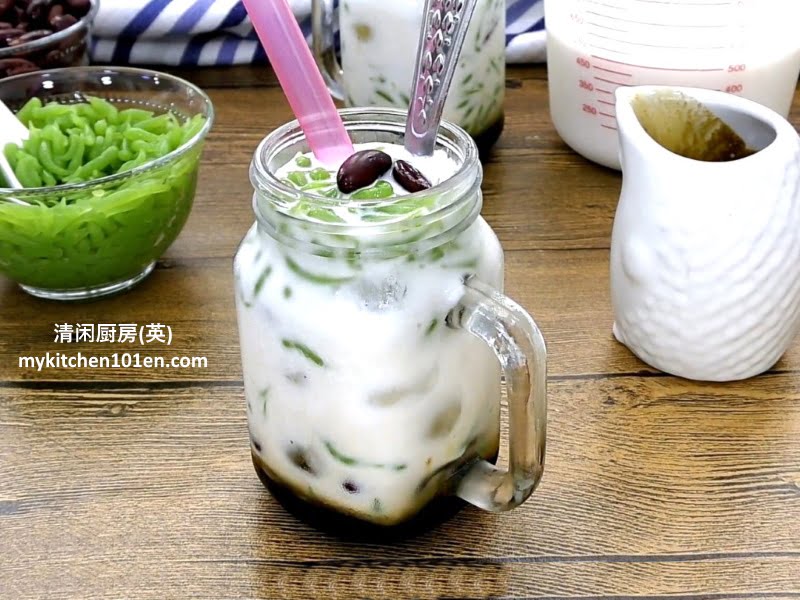
Related recipe: Brown Sugar Cendol Drink
Cendol is a testament to the creativity and versatility of Southeast Asian cuisine. These green rice flour jellies offer a delightful and refreshing taste of the region’s rich culinary heritage. With our easy-to-follow guide, you can now enjoy the pleasure of making homemade cendol jellies and share this unique dessert experience with your loved ones.
How To Make Cendol Jellies
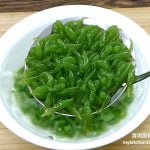
For cendol jellies made with fresh pandan juice, a few drops of lye water are needed to ensure your jellies have nice natural pandan green colour.
- strainer with holes
- 260 g pandan juice*
- ⅛ tsp fine salt
- 7 drops lye/alkaline water
- 22 g green bean/mung bean starch** (It is usually labelled as flour, sometimes as “green pea flour”. You may replace it with Hoen Kwee flour which is usually available at supermarket if you can’t find the mung bean starch.)
- 15 g cornstarch
*Pandan juice: Blend 14 g of pandan leaves with 265 g of water, extract 260 g of pandan juice.
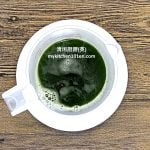
Combine salt, lye water and pandan juice, add in green bean starch and cornstarch, mix well, then sieve into a sauce pot.
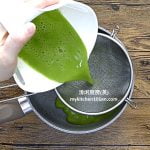
Get ready a large bowl of icy cold water.
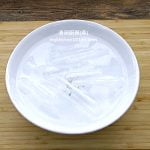
Cook over medium heat until fully translucent.
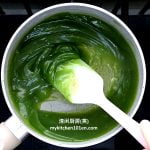
Transfer cooked mixture to large stainless steel strainer with holes. Press down with silicone spatula into cold water while still hot.
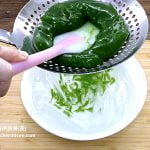
For storage: Put the jellies together with water in a container and keep refrigerated for later use.
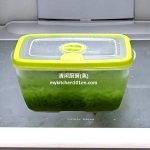
To serve chilled jellies: Drain off the soaking water, and rinse with hot water until softened. Drain off hot water, then soak again in icy cold water. Drain off the water before serving.
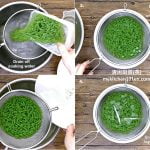
This recipe 250 g of cendol jelly divided into 10 servings.
The nutritional value for reference is for 25 g of cendol jelly.

